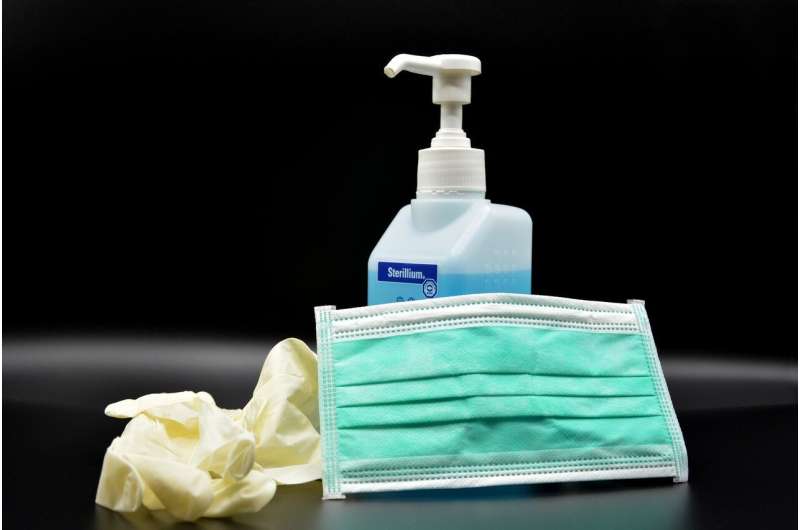
In a new study, National Institutes of Health researchers report that the prevalence of COVID-19 in the United States during spring and summer of 2020 far exceeded the known number of cases and that infection affected the country unevenly. For every diagnosed COVID-19 case in this time frame, the researchers estimate that there were 4.8 undiagnosed cases, representing an additional 16.8 million cases by July alone. The team’s analysis of blood samples from people who did not have a previously diagnosed SARS-CoV-2 infection, along with socioeconomic, health, and demographic data, offers insight into the undetected spread of the virus and subgroup vulnerability to undiagnosed infection.
“This study helps account for how quickly the virus spread to all corners of the country and the globe,” said Bruce Tromberg, Ph.D., director of the National Institute of Biomedical Imaging and Bioengineering (NIBIB), one of the NIH institutes who run the NIH SARS-CoV-2 Seroprevalence Project. “The information will be invaluable as we assess the best public health measures needed to keep people safe, as new—and even more transmissible—variants emerge and vaccine antibody response changes over time.”
In addition to NIBIB, the research team includes scientists from the National Institute of Allergy and Infectious Diseases (NIAID), the National Center for Advancing Translational Sciences (NCATS); and the Frederick National Laboratory for Cancer Research, sponsored by the National Cancer Institute (NCI). Their report in the June 22, 2021, early online issue of Science Translational Medicine represents the first data from the 12-month NIH study that was launched in April 2020.
“A hallmark of the coronavirus pandemic is that there are people infected with the virus that causes COVID-19 who have few or no symptoms,” said Matthew J. Memoli, M.D., M.S., director, Clinical Studies Unit, Laboratory of Infectious Diseases, NIAID. “While counting the numbers of symptomatic people in the United States is essential to contend with the impact of the pandemic and public health response, gaining a full appreciation of the COVID-19 prevalence requires counting the people who are undiagnosed.”
COVID-19 illness can range from short-lived cough, fatigue and fever to severe illness that could lead to hospitalization and death. Asymptomatic SARS-CoV-2 infection, which is rarely diagnosed, is a silent source of viral spread. While not causing overt signs of illness, undiagnosed infection poses a danger to the public and is a critical factor necessitating public health resources and strategies for addressing the pandemic.
The team recruited over 240,000 volunteers from across the country, then selected 8,058 individuals from that pool through quota sampling to ensure that their study cohort was representative of the U.S. population. Each participant received a sample kit to return to NIH with a dab of dried blood or had blood drawn at NIH, most of which they supplied in an 11-week span between May 10 and July 31. Participants also completed a questionnaire that enabled further analysis of the study results.
The researchers used an enzyme-linked immunosorbent assay to detect antibodies that recognize protein regions from the SARS-CoV-2 virus, referred to as antigens. Antibodies in a blood sample can bind to these antigens. The team found that 304 of the approximately 8,000 blood samples were seropositive, meaning that they contained antibodies against the SARS-CoV-2 virus. The researchers estimated that 4.6% of U.S. adults had undiagnosed COVID-19 during their study period. They determined that each diagnosed case of COVID-19 corresponds to an estimated 4.8 undiagnosed cases of the disease during this time frame.
The team observed that:
- the youngest participants—those between the ages of 18 and 44—had the highest estimated seropositivity, at 5.9%,
- estimated seropositivity was higher in females than in males (5.5% versus 3.5%, respectively),
- participants in the Mid-Atlantic and Northeast regions had the highest rates (8.6% and 7.5%, respectively), and participants in the Midwest had the lowest rates (1.6%),
- urban participants had a higher estimated seropositivity (5.3%) compared with rural participants (1.1%), and
- Black/African American respondents had the highest estimated seropositivity rate (14.2%), followed by Native American/Alaska Native (6.8%), Hispanic (6.1%), white/Caucasian (2.5%), and Asian (2%) respondents.
“The estimate of COVID-19 cases in the United States in mid-July 2020, 3 million in a population of 330 million, should be revised upwards by almost 20 million when the percent of asymptomatic positive results is included,” said senior co-author Kaitlyn Sadtler, Ph.D., chief of the NIBIB Section on Immunoengineering. “This wide gap between the known cases at the time and these asymptomatic infections has implications not only for retrospectively understanding this pandemic, but future pandemic preparedness.”
Source: Read Full Article
